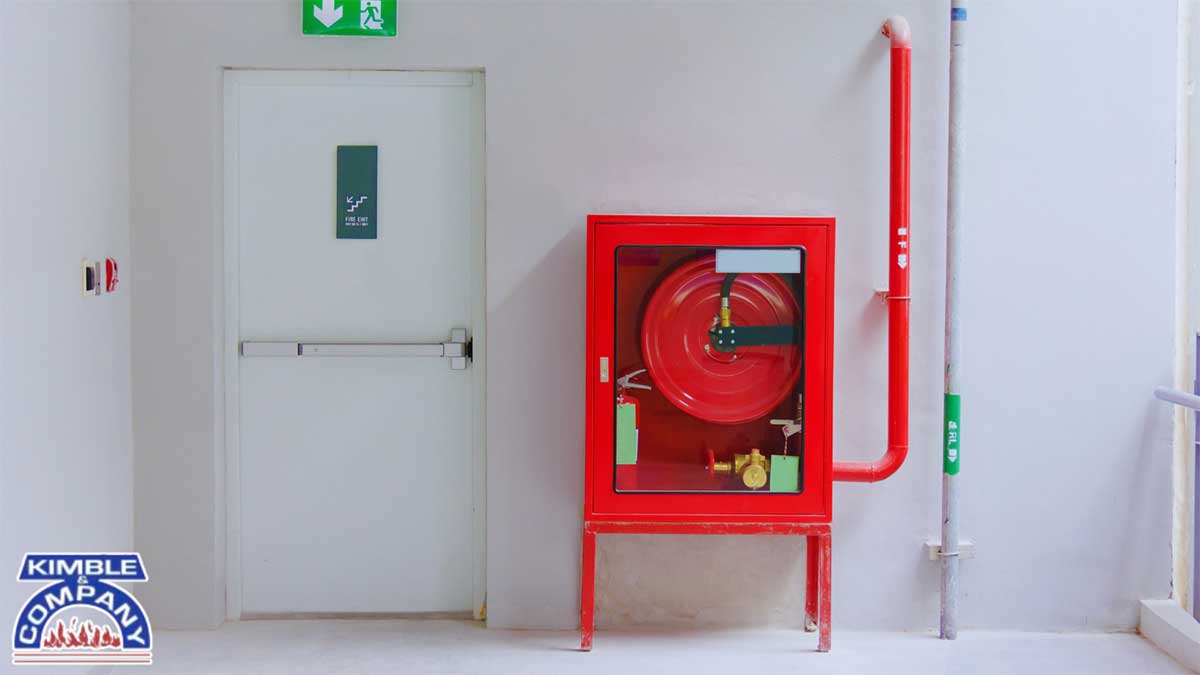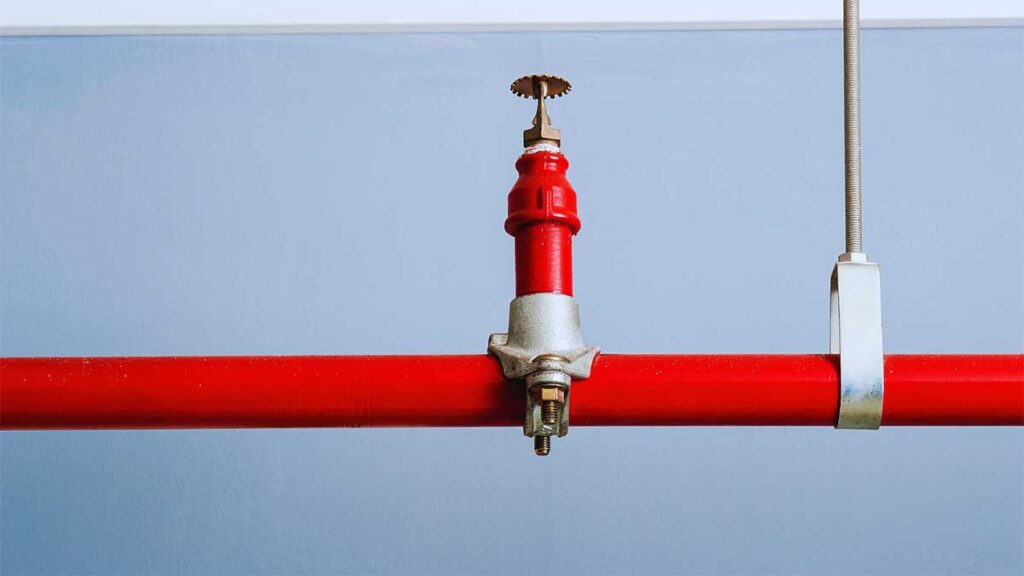Fires can devastate businesses in minutes, causing irreparable damage to property, financial losses, and even loss of life. In high-risk fire zones, where fire hazards are significantly greater, the importance of routine fire inspections cannot be overstated. These inspections identify vulnerabilities, ensure compliance with fire protection regulations, and help prevent catastrophic incidents.
Due to the presence of flammable materials, electrical hazards, and complex layouts, businesses operating in industrial hubs, commercial kitchens, storage facilities, or high-occupancy buildings face increased fire risks. Regular inspections ensure that fire sprinkler systems, fire alarms, and other suppression systems function properly when needed most. They also help businesses avoid legal penalties, expensive fire sprinkler repairs, and increased insurance costs.
What Defines a High-Risk Fire Zone for Businesses?
Not all business locations face the same level of fire risk. Due to their industry, building use, or environmental factors, some areas are more prone to fire incidents than others.
These high-risk fire zones require rigorous fire protection services to prevent devastating losses. A single fire can destroy assets, disrupt operations, and endanger lives, making it critical for businesses in these zones to have fire sprinkler systems, fire alarms, and routine fire inspections in place.
Understanding whether your business falls into a high-risk category is the first step toward taking preventive action. Factors such as building density, flammable materials, and equipment use all contribute to fire risks and determine the level of fire protection services needed.
Common Characteristics of High-Risk Fire Zones
Businesses operating in high-risk fire zones face unique challenges that demand strict fire safety measures. These locations typically share characteristics that increase the likelihood of a fire breaking out and spreading rapidly.
- Densely Populated Urban Areas
Cities with high-rise buildings, multi-tenant commercial spaces, and compact infrastructure are particularly vulnerable. Limited escape routes, high occupancy, and extensive electrical networks create conditions where a small fire can quickly become unmanageable. To reduce risks, a well-maintained fire sprinkler system and routine inspections are essential in these settings.
- Industrial and Manufacturing Facilities
Factories and production plants operate with heavy machinery, flammable chemicals, and combustible materials, making them one of the highest-risk environments for fires. Sparks from metal cutting, faulty wiring, or overheating equipment can ignite a fire within seconds. Without proper fire protection services, including a fire suppression system and emergency response planning, the potential for catastrophic loss increases.
- Commercial Kitchens and Restaurants
Restaurants, food production facilities, and catering businesses face constant fire hazards due to open flames, hot cooking oil, gas lines, and grease buildup. Kitchen fires spread rapidly if left unchecked, making it essential to have fire suppression systems, regularly inspected fire extinguishers, and trained staff who can handle emergencies.
- Warehouses and Storage Units
Large storage facilities hold highly combustible materials, including paper, plastic, wood, and chemicals. These materials can fuel a massive fire if improperly stacked or stored near heat sources or faulty electrical wiring. Businesses operating in high-volume storage must prioritize fire sprinkler system maintenance to ensure prompt fire suppression in case of an emergency.
Common Fire Hazards in High-Risk Business Zones
Identifying and addressing fire hazards in high-risk fire zones is crucial. These hazards increase the chance of fire outbreaks and complicate evacuation and suppression efforts.
- Electrical Failures
Faulty electrical wiring is one of the leading causes of fires in commercial settings. Overloaded circuits, damaged wiring, and improperly maintained electrical panels can lead to sparks and overheating, igniting nearby materials. Routine fire inspections can detect these issues early, ensuring compliance with fire protection standards.
- Combustible Materials
Improper storage of flammable materials—whether chemicals, paper, or textiles—creates a serious fire hazard. In high-risk fire zones, businesses must implement strict fire safety protocols to separate combustible materials from ignition sources and install fire sprinkler systems to suppress fires before they spread.
- Blocked Exits and Fire Hazards
Blocked fire exits, malfunctioning fire doors, and cluttered evacuation paths can turn a minor fire into a deadly disaster. Fire inspectors frequently find obstructed emergency exits in high-traffic commercial areas, preventing employees and customers from escaping safely. Routine fire sprinkler inspections and fire protection services help businesses stay compliant with fire codes and maintain clear escape routes.
Businesses in high-risk fire zones cannot afford to neglect fire safety. Understanding these hazards and investing in fire protection services, fire sprinkler system maintenance and routine inspections can make the difference between preventing a fire and suffering irreversible losses.
Why Are Fire Inspections Critical for Business Safety and Compliance?
Fire inspections play a pivotal role in safeguarding lives, property, and operational continuity. They confirm that essential systems such as fire sprinklers, alarms, and emergency exits are functional and aligned with current safety standards. By identifying and addressing hazards early, inspections help reduce the risk of equipment failure during emergencies and prevent avoidable loss or injury.
For businesses located in high-risk zones, the consequences of neglecting inspections are even more severe. Facilities with combustible materials, complex layouts, or high occupancy require ongoing attention to maintain fire readiness. Regular inspections ensure these systems remain code-compliant and responsive. More than a regulatory step, fire inspections signal a proactive approach to safety, reinforcing confidence among occupants, staff, and stakeholders.
Fire Inspections Prevent Fires Before They Start
Fire inspections thoroughly evaluate fire sprinkler systems, emergency exits, fire alarms, and suppression equipment to ensure they meet safety standards. The goal is to detect and address hazards early before they escalate into a fire emergency.
During an inspection, professionals look for:
- Clogged or Corroded Sprinkler Heads: Blocked sprinklers can fail to discharge water effectively in a fire. Routine fire sprinkler inspections ensure they are unobstructed and fully operational.
- Low Water Pressure or System Malfunctions: Insufficient water pressure in a fire sprinkler system can render it useless during an emergency. Inspections verify that control valves are open, pipes are free of leaks, and the system activates properly.
- Faulty Alarms and Fire Detection Equipment: Fire alarms that fail to sound can delay evacuation, putting occupants in danger. Inspectors check alarm function, battery life, and system connectivity.
- Obstructed Fire Exits and Blocked Escape Routes: Blocked exits or improperly marked evacuation paths can turn a minor fire into a fatal disaster. Inspections ensure doors, stairwells, and exit signs are clear and compliant with fire safety codes.
Identifying and fixing these issues before an emergency occurs reduces repair costs, prevents operational downtime, and ensures compliance with fire protection services.
Legal and Regulatory Requirements for Fire Inspections
Local, state, and national fire codes mandate fire inspections to ensure fire protection systems are fully functional and ready to respond to an emergency.
Non-compliance can result in Severe Consequences:
- Fines and Legal Penalties: Businesses failing fire inspections may face hefty fines or operational shutdowns until all violations are resolved.
- Loss of Business Permits: Companies operating without valid fire protection services risk having their licenses revoked, forcing them to cease operations.
- Increased Liability Risks: If a fire occurs and fire sprinkler inspections are skipped, businesses may be liable for damages, injuries, or fatalities. Lawsuits and insurance claim denials can lead to financial ruin.
Routine inspections verify that fire sprinkler system maintenance aligns with NFPA standards and helps businesses remain in full compliance with fire safety laws.
What Do Fire Inspectors Look for During Evaluations?
Fire inspectors conduct detailed evaluations to verify that all fire protection systems meet current safety codes and operate as intended. These inspections are not just procedural; they are critical to ensuring that facilities are prepared to detect and respond to fire emergencies before they escalate.
Inspectors review several core components, including fire sprinkler systems, alarm functionality, emergency exits, and evacuation signage. They check for blocked sprinklers, outdated or non-functional alarms, and any obstructions that could prevent safe evacuation. Failure to meet these requirements may result in citations, forced repairs, or temporary closure. Proactive maintenance and routine inspections help businesses stay compliant and avoid costly disruptions.
Key Areas of Inspection
- Fire Sprinkler Systems
Inspectors ensure the fire sprinkler system is fully operational by checking for leaks, corrosion, and clogged sprinkler heads. They verify that control valves are open and functioning, as a closed valve can shut off the water supply.
Adequate water pressure is also assessed to ensure the system can suppress flames effectively. Failing to meet fire sprinkler maintenance requirements may result in citations and mandatory fire sprinkler repairs.
- Fire Alarms and Suppression Systems
Fire alarms and suppression systems must be in working order to provide early fire detection and control. Inspectors test alarm systems for proper function and check that fire extinguishers are accessible and charged. Businesses with high-risk areas, like kitchens, require fire suppression systems, which must be maintained and ready for automatic activation.
- Emergency Exits and Evacuation Plans
Inspectors confirm that emergency exits are clear of obstructions and properly marked with illuminated exit signs. Fire escape stairs must be accessible and in good condition to allow a safe evacuation. A well-maintained evacuation plan ensures occupants can exit quickly in an emergency.
Any violations in these areas can result in penalties, fines, or shutdowns until the issues are corrected.
How Often Should Fire Inspections Be Conducted?
Regular fire inspections are essential for keeping buildings safe and legally compliant. The frequency depends on several factors, including building type, occupancy level, and industry-specific risks. High-risk environments like warehouses, restaurants, and healthcare facilities typically require more frequent checks due to the elevated potential for fire hazards.
Consistent inspections help verify that systems such as alarms and fire sprinklers are functioning as intended. Neglecting routine checks can lead to non-compliance, operational failures, and costly liabilities. Staying on schedule with fire inspections ensures early issue detection, reduces the risk of emergencies, and strengthens overall protection for occupants and property.
Recommended Inspection Intervals
Businesses should follow a structured fire inspection schedule to maintain compliance and ensure fire protection services are functioning as intended.
- Weekly Inspections
Visually inspect fire sprinkler heads, control valves, and pipes for leaks or corrosion. Ensure fire alarms are functional and that control panels show no errors. Fire exits and escape routes must remain clear at all times.
- Monthly Inspections
Test fire suppression systems to confirm they activate properly in an emergency. Inspect fire extinguishers for correct pressure and accessibility. Check emergency lighting and exit signs to ensure visibility during power failures.
- Annual Inspections
Schedule a full fire sprinkler inspection to comply with NFPA standards. Professional testing should verify fire alarm functionality and system readiness. Perform complete fire sprinkler system maintenance, including flushing pipes and checking water pressure.
Each of these inspections plays a crucial role in fire safety and compliance. Following a structured maintenance plan reduces the chances of unexpected failures and ensures that businesses remain prepared for emergencies.
Secure Your Business with Regular Fire Inspections
Fire inspections are not just a regulatory requirement but a critical safeguard for businesses in high-risk fire zones. Regular inspections help prevent fire hazards, ensure compliance, and protect against liability. A properly maintained fire sprinkler system is one of the most effective defenses against fire damage, ensuring your business meets all fire protection standards.
Don’t wait until a fire incident exposes vulnerabilities in your system. Take proactive steps today. Contact Kimble & Company Fire Protection Systems to schedule a comprehensive fire inspection and ensure your business remains safe, compliant, and prepared for any fire emergency.



